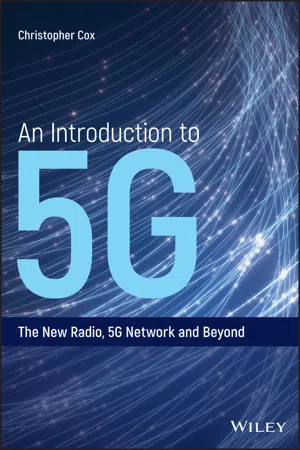
An Introduction to 5G
The New Radio, 5G Network and Beyond
Christopher Cox
- English
- ePUB (apto para móviles)
- Disponible en iOS y Android
An Introduction to 5G
The New Radio, 5G Network and Beyond
Christopher Cox
Información del libro
A comprehensive and approachable introduction to 5G
Written by a noted expert on the subject, An Introduction to 5G: The New Radio, 5G Network and Beyond offers an introductory system-level guide to 5G. The material covered includes:
- The use cases and requirements of the 5G system
- The architecture of the next generation radio access network and the 5G core
- The principles of radio transmission, millimetre waves and MIMO antennas
- The architecture and detailed design of the 5G new radio
- The implementation of HTTP/2 on the service-based interfaces of the 5G core
- The signalling procedures that govern the end-to-end-operation of the system
- The new features that are introduced in Releases 16 and 17
An Introduction to 5G is written for engineering professionals in mobile telecommunications, for those in non-technical roles such as management, marketing and intellectual property, and for students. It requires no more than a basic understanding of mobile communications, and includes detailed references to the underlying 3GPP specifications for 5G. The book's approach provides a comprehensive, end-to-end overview of the 5G standard, which enables readers to move on with confidence to the more specialized texts and to the specifications themselves.
Preguntas frecuentes
Información
1
Introduction
1.1 Architecture of a Mobile Telecommunication System
1.1.1 High‐level Architecture

1.1.2 Internal Architecture of the Mobile
1.1.3 Architecture of the Radio Access Network
